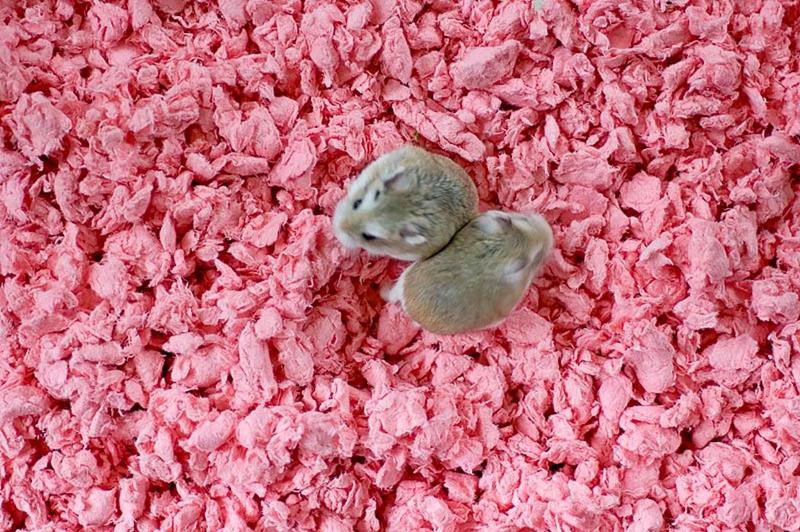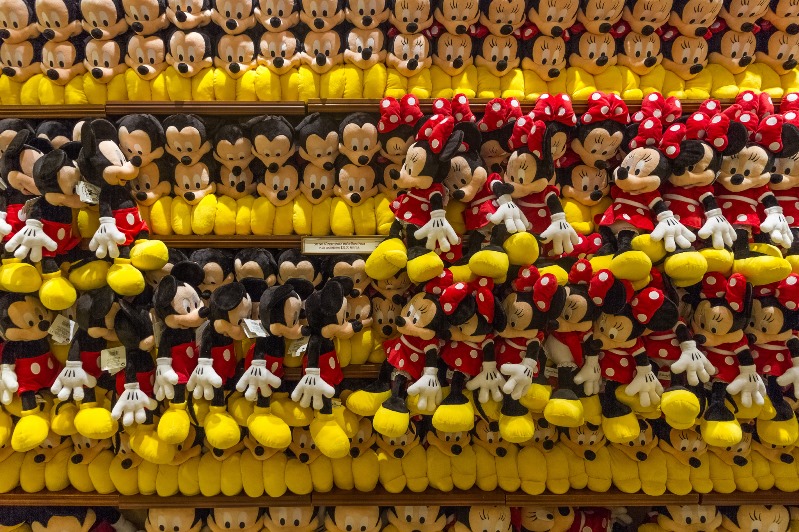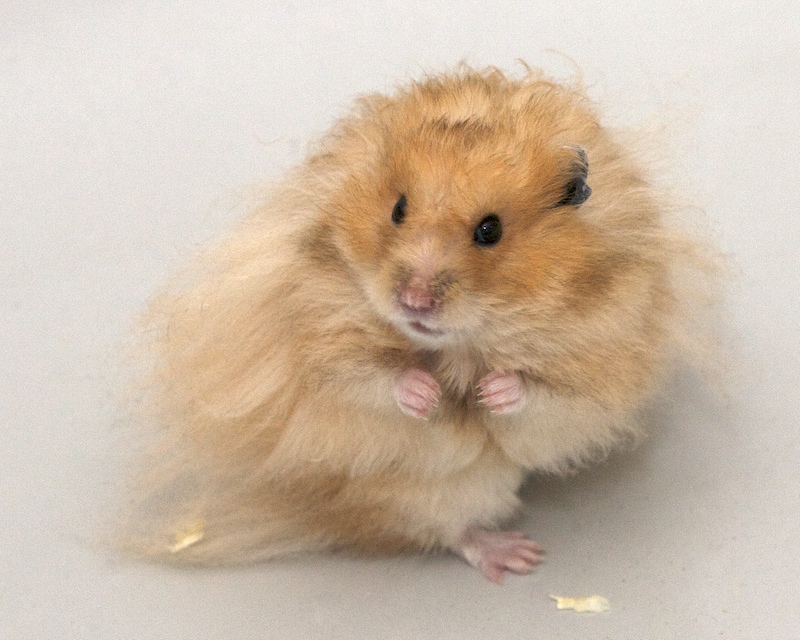This was my first guest post for LWON, in 2015. I’m reposting it because there’s yet another update: A few days ago, my mother revealed that, CONTRARY TO ALL HER PREVIOUS CLAIMS, it was the cat.
…
This week, while working on a little story for Science about hamster emotions, I decided to do some hard-hitting journalism, so I called my mother.
“Mom, I want to know what happened to Hamlet,” I said over the phone, interrupting her dinner party in California.
A pause. “Really?”
Hamlet was my childhood hamster. He looked a lot like the tawny fluffball pictured above. I named him Hamlet because, well, I was a pretty melodramatic kid.
The official story was that Hamlet disappeared. I remember my clever mother speculating that he had escaped into the black widow-infested crawlspace under our house by slipping through a vent. After learning the truth about what really happened to one of our dogs, however — a story for another time — I harbored suspicions.
Hamlet had always seemed pretty depressed. He didn’t appear to enjoy his colorful cage, complete with a tunnel, wheel, and ramp. He was sullen and ornery — a biter. He was a pretty lousy pet.
My mother confirmed my childhood impressions. The only thing he did with any enthusiasm was gnaw at his plastic cage in an attempt to escape, she said. Eventually, he did. “One morning, I came in to wake you girls up and he was not where he belonged,” she said. “Then I found his body.”
Hamlet hadn’t been obviously mangled or chomped on by our two cats, she said (SEE UPDATE.) “Maybe it was old age,” she said. “Or a broken heart.” (Reading this in light of what I know now, I am struck once again by my family’s emotional flair.)
“Do you think that Hamlet committed suicide?” I (unwittingly) said.
I felt bit silly – guilty, perhaps, of the scientific sin of anthropomorphism. When I talked to Emily Bethell, an animal behaviorist at the Liverpool John Moores University in the UK, however, my question started to seem more legitimate.
Bethell studies animal cognition in a number of species, including primates, in hopes of better understanding their emotional lives and improving their treatment in captivity. Historically, she says, studying animal emotion was considered pretty wishy-washy. You could study what animals did in response to various stimuli, but asking how they felt was seen as unscientific.
 One of the most frustrating things about trying to study animal emotion is that you can’t take behaviors at face value, she says. If a hamster runs madly on its wheel all night, for example, how do you know if it is running out of joy, or boredom? Though I’d argue that human behavior can be equally difficult to interpret, with animals there’s no way to ask.
One of the most frustrating things about trying to study animal emotion is that you can’t take behaviors at face value, she says. If a hamster runs madly on its wheel all night, for example, how do you know if it is running out of joy, or boredom? Though I’d argue that human behavior can be equally difficult to interpret, with animals there’s no way to ask.
About 10 years ago, Bethell told me, veterinary scientist Michael Mendl of the University of Bristol decided to try to bypass that problem in rats by measuring something called judgment bias—essentially, the way that mood affects behavior and decision-making. As humans, our decisions and perspective are influenced by emotion all the time—witness revenge-shopping, or the empty bag of peanut M&Ms on my desk.
In a 2004 paper in Nature, Mendl found that rats’ judgments are also influenced by their emotional state, growing more pessimistic when they are given damp bedding, or exposed to a reversed light-dark schedule or other unpleasant, unpredictable conditions. He and others went on to find similar biases in many other animals, including primates, pigs, and even bees, but no one thought to ask about hamsters. Now, perhaps shedding light on poor Hamlet’s behavior, if not his demise, Bethell has asked the question. On Tuesday, she and her colleagues published evidence that 30 Syrian hamsters living in cages bedecked with extra toys, ramps, bedding, and hammocks made slightly more optimistic predictions about whether a drinking bottle contained sugar water or bitter quinine than those living in austerity.
Could I have made Hamlet happier? It’s hard to say, Bethell says. One frequently-overlooked dimension to nearly all animal studies – particularly those testing drugs that affect mood, such as antidepressants – is the enormous range of variation in emotional response between individuals, she says. Scientists may be more aware of such differences in primates, because they are closer to us and studies focus on smaller numbers of animals. But studies of rodents such as hamsters, mice, rats, and guinea pigs “tend to pool the data and ignore the difference between individuals,” she says. (Bethell’s team took such differences into account in their own statistical analysis.) In other words, maybe Hamlet just was a moody bastard.
This is what I love about science writing. One minute you’re talking about hamsters, and the next minute things get deep. Since taking on the neuroscience beat a few years ago, what rodents think and feel, and how much they “model” people, is a topic with which I’ve become increasingly obsessed. Researchers take care to insist that rats, mice, and other rodents aren’t experiencing autism, depression, and schizophrenia, but merely displaying autism, depression and schizophrenia-like behaviors. Our brains are different, not to mention our immune systems. (Slate’s series “The Mouse Trap” nicely lays out many of the objections.)
At the same time, neuroscience is replete with studies attempting to bridge the rodent-human gap: rats who will forsake chocolate to save a drowning companion, rats who seem to regret making poor choices –mice who seem to obtain pleasure from running on wheels in the wild, simply for the heck of it.
But it’s not just the scientific questions that preoccupy me. It’s the weirdness of the rodent-human relationship. Think about it: has any other animal type been so relentlessly, lovingly, and perversely anthropomorphized and dehumanized, simultaneously?
 One need go no further than Wikipedia’s “List of fictional rodents” to be reminded of the depth of our sympathies, and, I would argue, some of the best characters and quotes in film and literature:
One need go no further than Wikipedia’s “List of fictional rodents” to be reminded of the depth of our sympathies, and, I would argue, some of the best characters and quotes in film and literature:
There’s Ratty, from A Wind in the Willows: “There’s nothing, my young friend, nothing, half so much worth doing as messing about in boats.”
Templeton from Charlotte’s Web: “A fair is a veritable smorgasbord orgasbord orgasbord, after the crowds have ceased.”
And Stuart Little: “A misspelled word is an abomination in the sight of everyone.”
Just try Googling the American Fancy Rat and Mouse Association, where you’ll discover a subculture of rat and mouse “fanciers,” who throw week-long competitions judging which rodents are “Friendliest,” “Most affectionate,” or “Most Laid Back.” (Do they dope-test in these competitions?)
Less sentimental is the relationship driven by medical need and curiosity. Rodents breed fast, and our ability to manipulate their genes makes them invaluable scientific tools. They are, some argue, a less distasteful alternative to primates. Flip through the catalog in the JAX® Mice Database at Jackson Laboratory, and you’ll see rodents of far greater variety than those bred by fanciers. These, however, are designed not to fulfill our anthropomorphic fantasies or provide companionship, but to mimic human frailty: Huntington’s disease, ALS, cancer.
There are many more facets to our complicated relationship with rodents – disgust and loathing prominent among them – but few of them have much to do with the animals themselves. I’m drawn to studies like Bethell’s because they’re looking for more objective ways of understanding how animals think and feel, which are less clouded by our own perceptions. Such measures “really help open up the discussion” about how we should be treating them, she says.
When first started writing about neuroscience, I thought it would be good for me to get a mouse as a pet. After all, I was learning far more about how to make a rodent healthy and well-adjusted than I was learning about people. I did my homework and decided to get a fancy Silver Blue Agouti rat from a good breeder. I bought the bedding, and the drinker. I would love him and make sure he fulfilled his rat potential. I even wrote to Partha Mitra, a neuroscientist at Cold Spring Harbor, to ask if he thought it was a good idea, or rather perverse considering I spent all day reading about their sacrifice.
“I don’t think it a perverse desire at all to keep a pet mouse,” he wrote back. “After all, they are our closer cousins than the carnivores.” He said he’d done some soul-searching of his own when he first started working experimentally with rodents, but that he no longer does the surgeries in his own lab now that he has lab assistants to help. “I guess that inserts a distance,” he said. “I don’t know if that is a good or bad thing.”
“If you keep any pet,” he wrote, “I suppose it becomes a companion and a mirror unto your soul. The brain images [of mice and rats] provide a different kind of mirror, into ourselves, through our distant evolutionary cousins. Paradoxically, it makes you feel more connected.”
I thought of Hamlet the hamster – a mirror unto my soul, now dead – and abandoned the idea of a new pet.
 P.S. I sent this to my family this morning, and my sister had something to add.
P.S. I sent this to my family this morning, and my sister had something to add.
“Ok wait wait wait. Hold the mother fucking phone. Hamlet was MY hamster. That is all.”
__________
Emily Underwood writes for Science in Washington, D.C. She’s on Twitter at @em_underwood
__________

I heard about this site on NPR’s science Friday. I read yours first. I loved it.